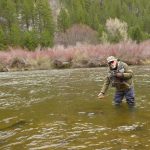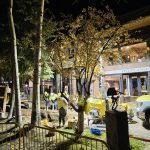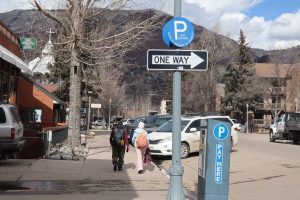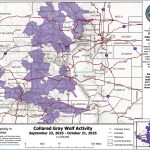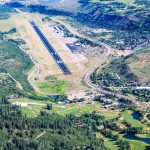Satellite SOS signals from ‘PLBs’ have sent Colorado search-and-rescue officials to thrift stores, landfills, and even a zoo. But most are false alarms
The Colorado Search and Rescue Association has seen an uptick in ‘incidental’ activations of personal locator beacons
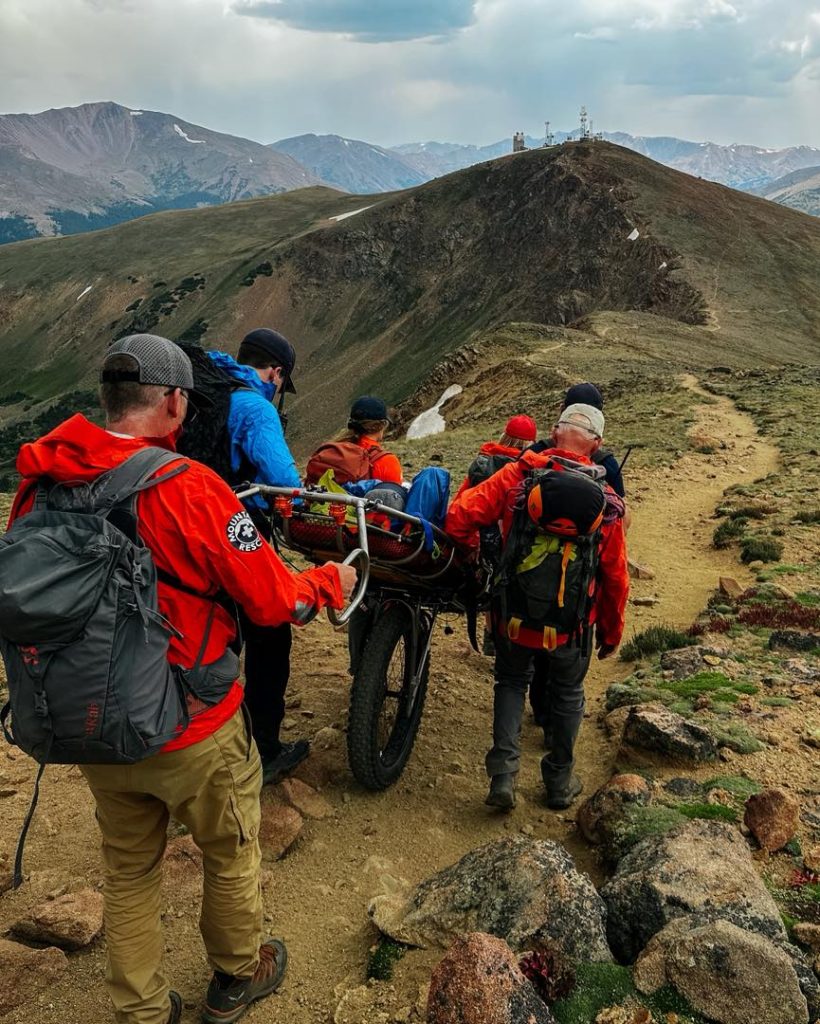
Grand County Search and Rescue/Courtesy photo
Colorado search-and-rescue officials have been chasing satellite SOS signals around the state, sometimes tracking them to thrift stores, landfills, and other bizarre locations.
Personal locator beacons, often called PLBs, allow backcountry travelers to signal for help by bouncing an alert off satellites. Only, in recent years, the portable, battery-powered devices — which are different from satellite communicators like the Garmin InReach — have been sending off distress signals when nobody is in danger.
“The vast majority of PLB activations are incidental activations, whether that is through device malfunction, through misuse, through accidental activation,” said Jay Christianson, a public information officer with the Colorado Search and Rescue Association. “The list of reasons they get activated is quite large, but the vast majority are incidental.”
So far this year, rescuer volunteers in Colorado have been notified of 24 alerts from PLBs, only two of which turned out to be for real emergencies, according to the rescue association.
That is more alerts from PLBs than the Colorado Search and Rescue Association received in all of 2024, when it received notice of 23 personal locator beacon activations, only three of which involved real incidents.
When PLBs first hit the market in the United States in 2003, the devices were “cutting-edge” technology, Christianson explained. The beacons allow people in remote areas to send a one-way alert indicating that they were in need of help.
“They’re a nifty little tool. They work pretty much anywhere in the world, but they are one-way communication devices,” he said. “They are literally just throwing up a flag that says ‘Help, help, help!'”
In the past decade or so, though, the emergence of satellite communicators — devices like the Garmin InReach — that can send two-way messages from the backcountry has largely replaced PLBs, he said. These days, many smartphones also have satellite communication capabilities.
As backcountry enthusiasts replace their PLBs with satellite communicators, Colorado Search and Rescue State Coordinator Bruce Beckman said that a large number of the false activations that rescuers respond to are due to improperly disposed beacons.
“We know where the recycling centers are in Denver now,” Beckman said. “We get coordinates (from the personal locator beacon going off), and we’re like ‘Yep, there it is at the landfill. There it is at the recycling center.'”
Chasing PLBs
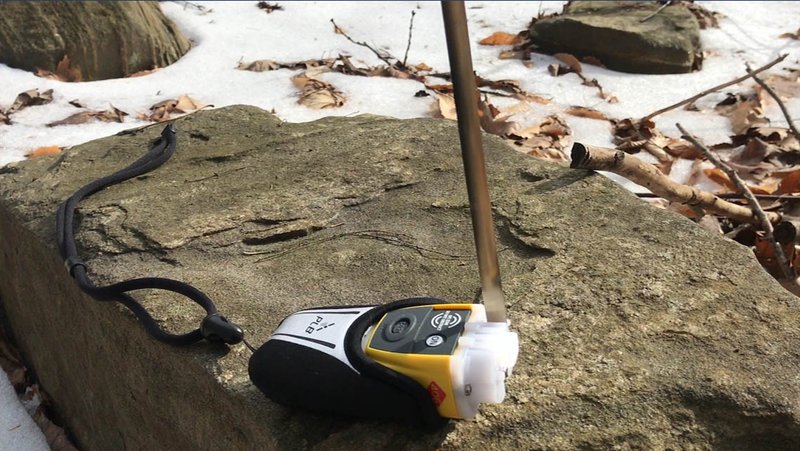
When a PLB is activated, it bounces a distress signal off a satellite and to the Air Force Rescue Coordination Center in Florida, Beckman said. The Air Force then plots the coordinates of the beacon, before contacting the jurisdiction having authority, which in Colorado is the Colorado Search and Rescue Association, he said.
When state coordinators like Beckman respond to a PLB activation, the first thing they do is attempt to call the phone number to which the beacon is registered. But, in many cases, Beckman said the registration information is out of date or the device is not registered at all.
“I’d say probably half of PLBs are not registered,” he said, noting that federal regulations require PLBs to be registered for free with the National Oceanic and Atmospheric Administration.
When a beacon is registered, state coordinators can call the phone number associated with it and oftentimes will quickly learn that the device has been activated by accident, he said. But when the device isn’t registered, state coordinators have to locate the beacon and notify the sheriff’s office in the county where it is going off, he said.
“If they don’t have that (registration), we have nothing to go on,” Beckman said. “Then the sheriffs are put into very tight spots. ‘Do I field a rescue team to hike 6-8 miles to find this thing? And, if I don’t, what happens if it was real and someone is really injured?'”
Moreover, compared to modern satellite communication devices that send a message to satellites with the exact coordinates of the device, PLBs are “not that accurate,” he said. The beacons have to be triangulated by satellites, which can take time to get an accurate location.
During one recent PLB activation in Grand County, he said the beacon’s signal indicated it was somewhere within a 15 mile radius — that’s the equivalent of 700 square miles.
“Where do you start?” he asked. “So, you wait for another pass of the satellite to get another reading.”
And, sometimes a beacon’s signal will move around the state if it is accidentally activated when it’s in a vehicle. In these cases, Beckman said state coordinators can be pretty certain it’s not a real emergency, but they still have to track down the beacon.
In one instance this spring, a PLB was accidentally activated on Mount Blue Sky. Soon, the beacon signal was flagged on Interstate 70 near Idaho Springs, he said. A while later, the signal was in Colorado Springs and then it stopped in El Paso County, where the local search-and-rescue team eventually located it in someone’s vehicle.
“Ten and a half hours were spent on that call tracking that thing,” he said. “It settled in a residential area. Even with 400-meter accuracy, in a residential area, that’s a lot of homes. People were literally knocking on doors asking if you had anything like (a personal locator beacon).”
A few years ago, one of the “funniest” searches for a PLB ended when the device was eventually located in a pile of animal feces at a zoo, Beckman said.
“How it ended up there, nobody has a clue,” he said.
But because PLBs are intended to signal that someone is in distress, the situations can also be quite serious, he said. He noted that earlier this year, a 70-year-old man intentionally activated a PLB at a backcountry hut near Durango.
“At first, we were like ‘Here we go again,'” Beckman said. “But we sent a crew in, and sure enough, the guy had frostbitten toes and fingers. He really did have a need, and we were able to assist with that.”
Disposing of PLBs
To help Colorado search-and-rescue groups, Beckman said anyone who has a PLB should make sure it is registered properly and up to date with their phone number and an emergency contact.
Those who plan to dispose of their PLBs should do so properly by removing the batteries and notifying the National Oceanic and Atmospheric Administration that it is being deactivated, he said.
Backcountry enthusiasts who are still using PLBs should also consider upgrading to a satellite communicator, which would allow them to communicate directly with rescuers in an emergency, rather than just send an SOS signal, Beckman added.
“If I can communicate both ways to and from, we know what the problem is, we know what level of assets we need to send in, and we can determine how quick we need to get in there. Do we need to fly in, or do we need to send a ground team in?” he said. “Just a PLB going off, we don’t know that.”
While satellite communication devices have helped search-and-rescue groups locate people in trouble in many cases, Christianson said there is no replacement for being prepared and leaving a trip plan behind with someone who knows when to expect you back.
“Communication devices that can hit satellites are really useful tools in certain cases,” he said. “But having a plan, sticking to your plan and communicating the plan to a contact who is not with you can dramatically reduce the challenge rescuers face in trying to get to you quickly should something go wrong.”
Aspen poet’s ‘Cowgirl Poetry’ hits bestseller lists
Aspen resident poet Charlie Henderson celebrated a remarkable literary debut last week when her book, “Cowgirl Poetry,” was published on Oct. 15 and immediately soared to No. 1 within 24 hours.
City of Aspen supports parking cost increase
Aspen City Council supported increasing city parking fees next year to help support public transportation costs, fund an increased demand for parking services, and reduce congestion.



